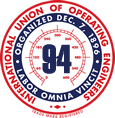Managing Cholesterol Without Medication
It is a common misunderstanding that all cholesterol is bad for your health. Cholesterol is actually very important to the proper functioning of your body. There are two main types of cholesterol—HDL and LDL.
LDL cholesterol supports your body by delivering cholesterol to cells—but too much LDL cholesterol clogs your arteries. When your arteries are clogged, blood flow in the body is restricted, increasing your risk of heart disease and stroke. This is why LDL is often known as the “bad” cholesterol.
HDL, often called the “healthy” or “good” cholesterol, removes excess LDL from the body.
What Affects My Cholesterol?
There are many factors that affect your cholesterol but the most important ones are your diet, weight and how active you are. Red meats, dairy products and other foods high in saturated fats raise your overall cholesterol, especially your LDL. Foods high in trans fats, like fried and processed foods, raise your LDL and lower your HDL.
If you are overweight or carry extra pounds around your midsection, you might have a higher risk of high cholesterol. Smoking and other chronic conditions like Type 2 Diabetes can also affect your risk of developing high cholesterol.
Managing Cholesterol Naturally
Medication may be necessary to help some people manage their cholesterol, but there are steps that everyone can take to reach or maintain healthy cholesterol levels.
- Choose better proteins and meats. Because of the high amount of saturated fats in red meat, try eating these less often. If you choose to eat red meat or other meats, select leaner cuts—aim for at least 92% fat-free. Choosing skinless chicken and turkey can also help cut out saturated fats. Or, try non-meat proteins like beans, lentils and fish.
- Choose low-fat dairy products or non-dairy alternatives. Dairy products high in fat raise your bad cholesterol. Try selecting low-fat or reduced-fat milks, cheeses and yogurts instead. Products with non-dairy bases like almond milk and coconut milk are also great alternatives.
- Eat more whole grains, fruits and vegetables. Fiber in whole wheat grains, oats, quinoa, fruits and vegetables can help lower your bad cholesterol. The USDA recommends three to five servings of whole grains, 1.5 to two servings of fruit and two to three servings of vegetables for adults each day.
- Avoid fried and processed foods. One of the easiest ways to help your cholesterol is by avoiding fried and processed foods. These foods contain high amounts of trans fats that increase your bad cholesterol and lower the good. Instead of frying foods, try pan-frying or sautéing with olive oil or avocado oil.
- Quit smoking. When you smoke, your blood vessels become weaker and your good cholesterol levels decrease. But there’s good news! Even if you are a long-time smoker, the effects of quitting on your blood vessels and heart are still significant. In fact, within one year of quitting, your risk of heart disease decreases by half.
- Get moving! Exercising regularly helps raise your good cholesterol levels. Regular physical activity can also help you lose excess weight, improving your cholesterol levels even more. Aim for at least 30 minutes of moderate physical activity a day.
If you’re having trouble managing your cholesterol, speak with your doctor. For more information and tips on maintain a healthy cholesterol, visit the CDC’s website. And make sure you get an annual physical and discus the results of your blood tests with your doctor.
FAQs
I just got divorced – how does this affect my Annuity Fund?
You must notify the Annuity Fund office and supply the office with your complete divorce decree and any supporting documents (stipulation agreements). If your former spouse is entitled to a portion of your Annuity Fund account, a QDRO should be submitted to the Annuity Fund office for review and consideration.
In the event of a divorce, you should review your beneficiary on file with the Annuity, Central Pension and Health and Benefit Funds.


